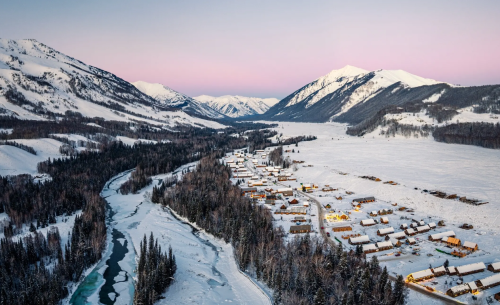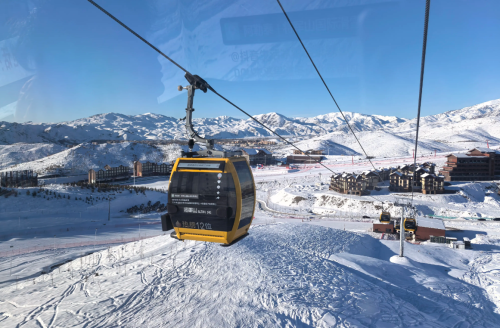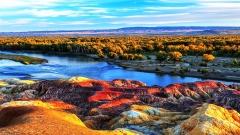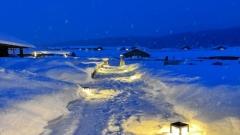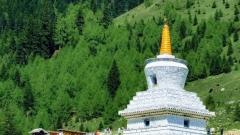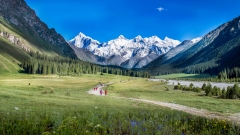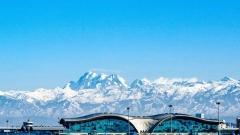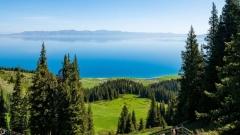Xinjiang, China’s vast northwestern region, is often celebrated for its deserts, lakes, and Silk Road heritage—but in winter, it transforms into a wonderland of snow and silence. Towering mountain ranges like the Tianshan, Altai, and Kunlun create dramatic snowy panoramas stretching across thousands of kilometers. For travelers seeking breathtaking winter views, Xinjiang offers some of the most spectacular snow-covered peaks in Asia. From ski resorts to high-altitude passes, here’s your complete guide to the best places to see snow-capped mountains in Xinjiang.
The Tianshan Mountains – The Heavenly Peaks of Xinjiang
Location: Central Xinjiang, stretching from Urumqi to Kucha
Best time to visit: December to March
The Tianshan Mountains (literally “Heavenly Mountains”) are Xinjiang’s most iconic range, dividing the region into northern and southern parts. In winter, their jagged ridgelines are coated in pristine white snow, visible even from Urumqi on clear days.
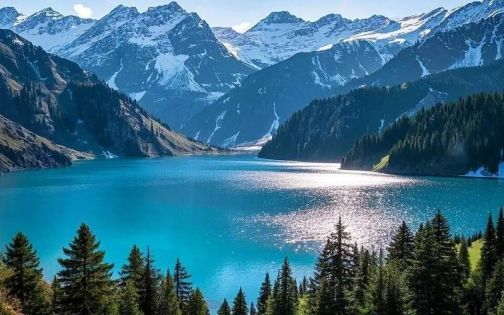
Heavenly Lake (Tianchi) of Tianshan
Top Spots to See the Tianshan in Winter:
-
Tianchi (Heavenly Lake): Just 1.5 hours from Urumqi, this turquoise alpine lake is surrounded by snow-covered fir forests and the majestic Bogda Peak (5,445 m).
-
Nanshan Pastures: A favorite among locals, this area features rolling snowy meadows with pine forests and views of distant peaks — perfect for half-day snow hikes or horseback rides.
-
Tianshan Grand Canyon (Kuche): A surreal contrast of red sandstone and white snow, great for photographers.
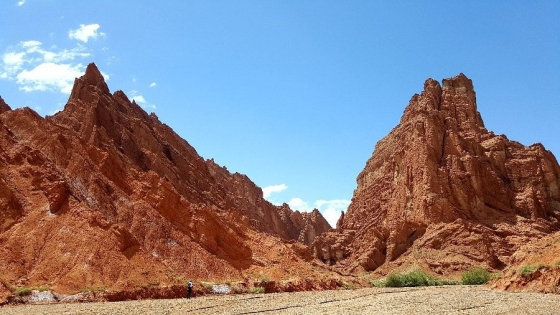
Kuche
Travel Tip: Bring crampons or anti-slip boots if you plan to walk around the frozen Tianchi Lake — its surface becomes icy in midwinter.
Altay Mountains – The “Siberia of China”
Location: Northern Xinjiang, near the borders of Mongolia, Russia, and Kazakhstan
Best time to visit: November to March
The Altay Mountains are known for their thick snow, birch forests, and pristine wilderness — a paradise for both skiers and nature photographers. Winters here are long and cold, with temperatures often below -20°C, creating postcard-perfect snow scenes.
Top Spots in the Altay Range:
-
Kanas Lake: Encircled by snowy forests and peaks, this is one of the most beautiful places in all of China. The Kanas Nature Reserve looks like a Nordic fairy tale in winter — frozen lakes, wooden cabins, and smoke rising from village chimneys.
-
Hemu Village: A wooden village of Kazakh herders, Hemu becomes a snow paradise from November to February. The view of sunrise over the snowy rooftops is legendary.
-
Altay City Ski Resorts: Xinjiang’s best skiing area, where locals still use wooden skis, a tradition said to be over 2,000 years old.
Travel Tip: Temperatures can drop below -30°C — dress in multiple layers and bring hand warmers for camera batteries.
Pamir Plateau – The Roof of the Western Frontier
Location: Kashgar Prefecture, southwestern Xinjiang
Best time to visit: October to February
The Pamir Plateau, part of the “Roof of the World,” lies where the Kunlun, Karakoram, and Tianshan ranges converge. This is one of the most dramatic landscapes in Asia — high-altitude deserts, glittering glaciers, and snow-capped peaks that pierce the sky.
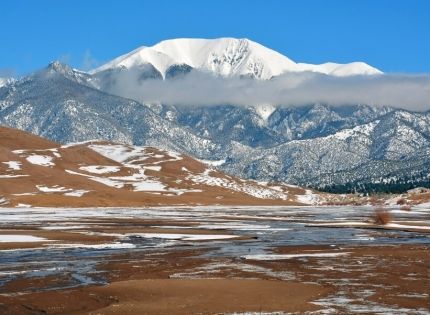
Pamir Plateau
Best Viewpoints:
-
Karakul Lake: Situated at 3,600 meters above sea level, this sapphire-blue lake reflects the towering Muztagh Ata (7,509 m) and Kongur Tagh (7,719 m), two of the highest peaks in China. In winter, the lake partially freezes, and the mirrored image of Muztagh Ata against the golden sunset is unforgettable.
-
Tashkurgan (Stone Fortress Town): Surrounded by snowy Pamir peaks and ancient ruins, it’s a peaceful place where you can feel the blend of nature, history, and Tajik culture.
Travel Tip: High altitude means thin air and strong UV rays — wear sunscreen and sunglasses even on cloudy days. Roads may close temporarily after heavy snow, so travel with an experienced local driver or tour guide.
Bogda Peak – The Sacred Summit near Urumqi
Location: East of Urumqi, within the Tianshan range
Best time to visit: December to March
Bogda Peak (5,445 m) is one of the most famous and easily accessible high peaks in Xinjiang. It’s also considered a sacred mountain in local Kazakh and Mongolian traditions. During winter, its sharp silhouette dominates the horizon, covered in deep snow.
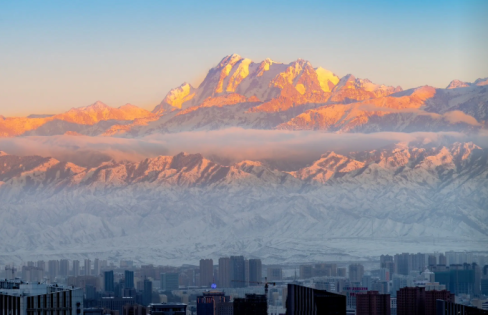
The best viewpoints are around Tianchi (Heavenly Lake) and Fukang City, where you can see the peak glowing golden at sunrise or deep blue under moonlight.
Hiking in Winter:
Some short trails near Tianchi remain open even in winter, offering breathtaking views of frozen lakes and snowy pine forests.
Nalati Grassland – A Winter Pastoral Wonderland
Location: Ili Prefecture, Western Xinjiang
Best time to visit: December to February
Known for its rolling green meadows in summer, Nalati Grassland turns into a vast snowfield in winter, framed by the Tianshan Mountains. The snow-covered yurts, frozen rivers, and grazing horses create a poetic winter scene straight out of a painting.
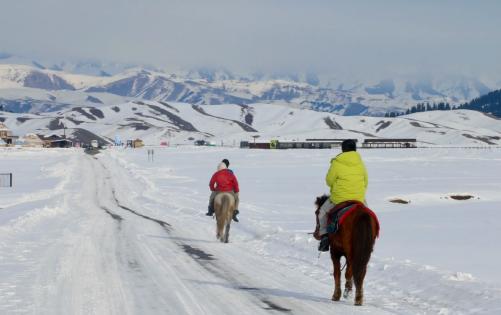
Visitors can take short snow treks or horseback rides guided by local Kazakh herders, offering a unique cultural experience amid pristine scenery.
Travel Tip: The weather is milder compared to Altay or Pamir — around -5°C to -15°C — making it suitable for family trips and light winter hikes.
Bayinbuluk Grassland and Swan Lake
Location: Central Tianshan, Hejing County
Best time to visit: December to March
Nestled in a high-altitude valley surrounded by snowy peaks, Bayinbuluk is home to the famous Swan Lake, which remains partially frozen in winter. The reflection of the snow-covered Tianshan Mountains on the icy lake surface is magical, especially at sunrise.
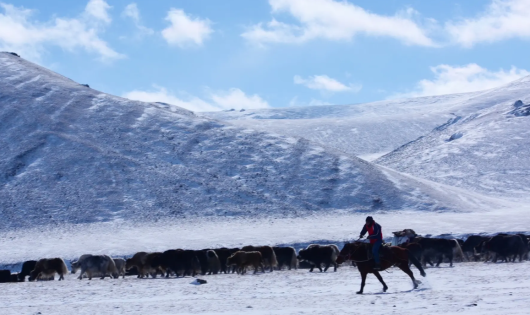
You can also see local herders moving through the snow with their flocks, a rare glimpse of Xinjiang’s traditional nomadic life that continues even in the depths of winter.
Travel Tip: Roads can be slippery — 4WD vehicles are recommended. Dress warmly and pack extra snacks and hot drinks; amenities are limited in the area during winter.
Kunlun Mountains – The Mysterious Southern Range
Location: Bordering Tibet and Southern Xinjiang
Best time to visit: October to February
Less visited but equally grand, the Kunlun Mountains form Xinjiang’s southern border and hold deep mythological significance in Chinese culture. Their vast snowfields and glaciers remain frozen year-round.
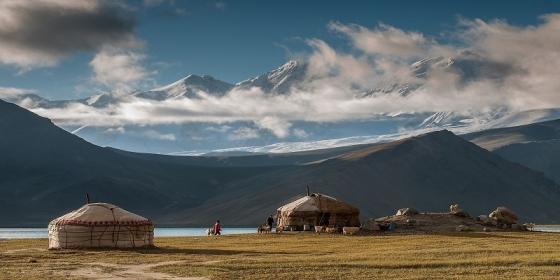
Kunlun Mountains
From Hotan, travelers can see the white peaks rising above the desert — a striking image of ice meeting sand. The Karakash River Valley and Kunlun Pass provide some of the best winter views.
Travel Tip:
These areas are remote and not heavily developed for tourism — travel with proper permits and a registered guide.
Travel Tips for Visiting Xinjiang’s Snow Mountains in Winter
-
Weather and Clothing:
-
Expect temperatures from -5°C to -30°C depending on altitude.
-
Dress in layers: thermal base, fleece or wool, and waterproof outerwear.
-
Gloves, hats, and snow boots are essential.
-
-
Transportation:
-
Winter flights to Urumqi, Altay, and Kashgar operate normally.
-
Some mountain roads may close temporarily due to snow; check updates in advance.
-
-
Photography Tips:
-
Bring extra batteries — cold drains power quickly.
-
Use polarized lenses to avoid glare from snow.
-
Early morning and sunset provide the best lighting for snow peaks.
-
-
Cultural Etiquette:
-
Many regions are home to Kazakh, Uygur, and Tajik minorities — always ask before photographing locals.
-
Respect religious sites and avoid stepping on prayer carpets or sacred stones.
-
-
Health and Safety:
-
Stay hydrated, even in cold weather.
-
In high-altitude areas like Pamir, avoid strenuous activity for the first day.
-
Conclusion
From the glacial majesty of the Altay Mountains to the towering summits of the Pamir Plateau, Xinjiang’s snow-covered landscapes capture the very essence of winter’s beauty. Each mountain range tells a different story — of ancient Silk Road travelers, nomadic life, and the raw power of nature. Whether you’re chasing reflections at Karakul Lake, skiing in Altay, or standing in awe before Bogda Peak, Xinjiang in winter offers an adventure unlike anywhere else in China.



